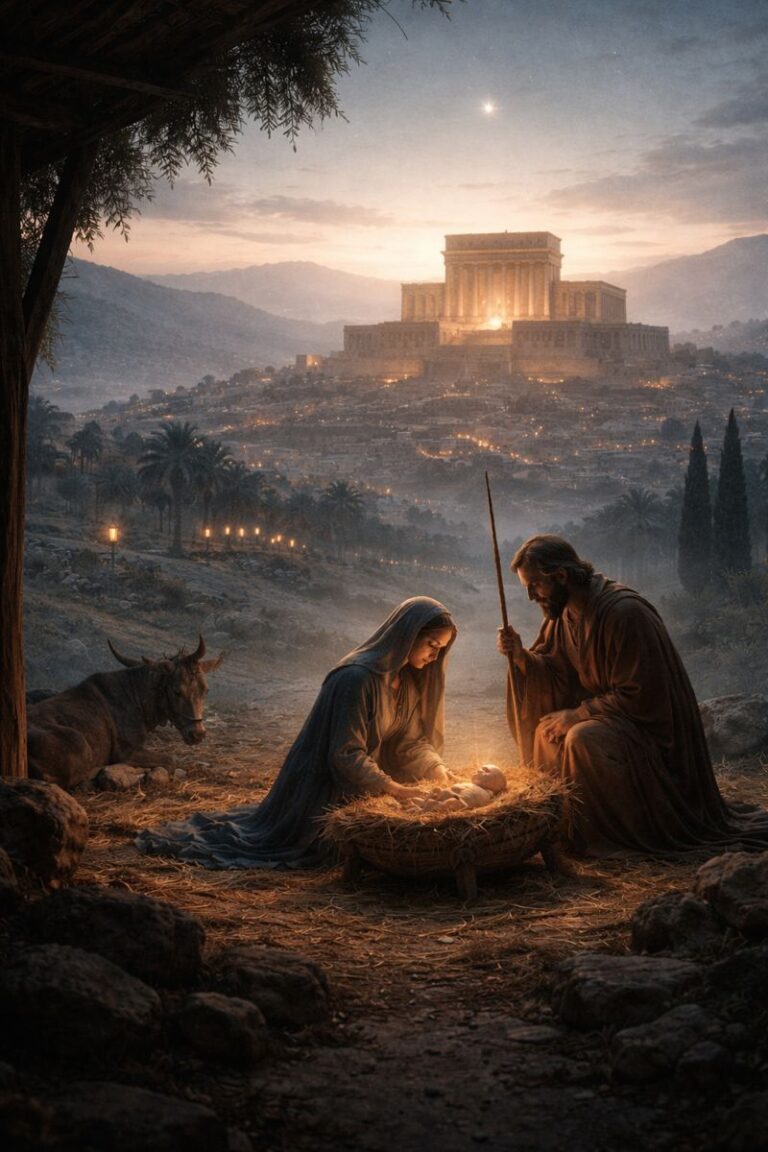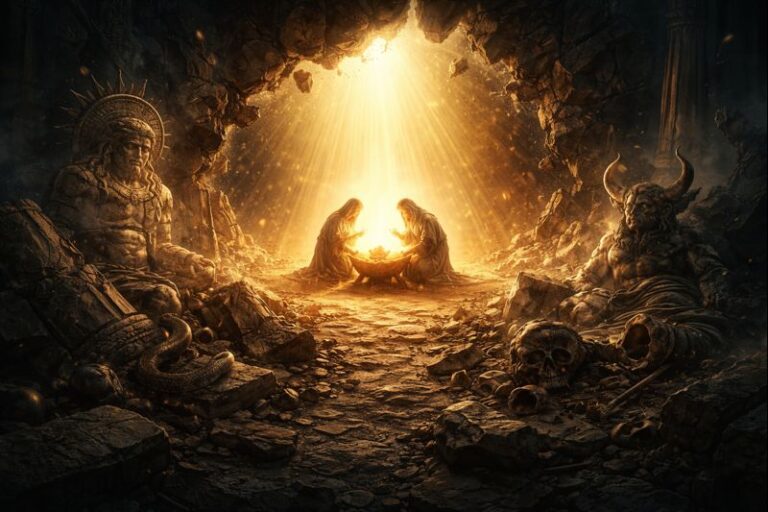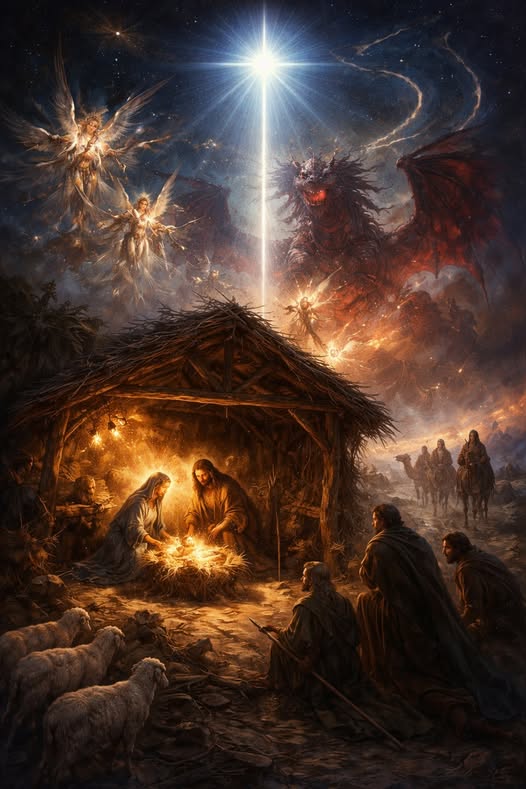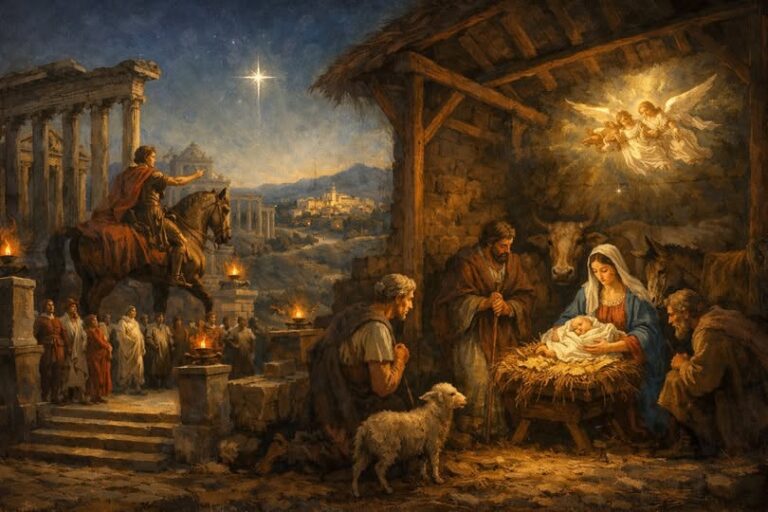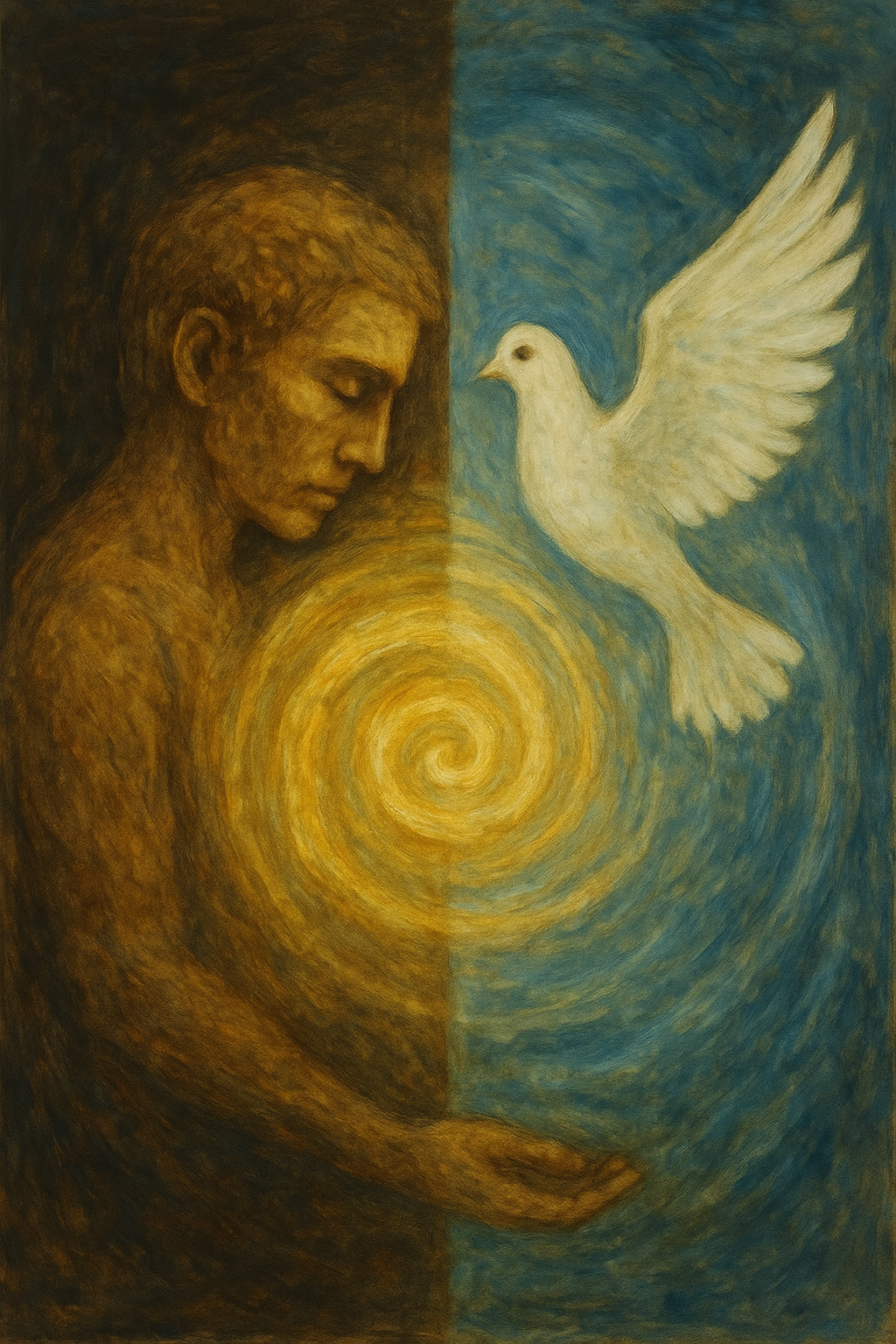
Genesis 2:7 says, “Then the Lord God formed the man of dust from the ground and breathed into his nostrils the breath of life, and the man became a living being.” The Hebrew phrase for “breath of life” is nishmat chayyim. This describes the animating force that made Adam a living creature. It is not the same word used elsewhere for God’s Spirit (ruach), nor is it a reference to the Holy Spirit as revealed in the New Testament. The text is describing how Adam becomes physically alive, not how he becomes spiritually indwelt.
To fully understand what Adam and Eve had, and what they didn’t, we also need to understand where they were.
Eden was not just a garden. It was the place where heaven and earth met, the residence of Yahweh and His Divine Council. Several Old Testament passages hint at Eden being a mountain sanctuary, similar to the later temple. In Ezekiel 28, Eden is described as the “holy mountain of God.” In Genesis 3, God is said to walk in the garden in the cool of the day. This was a realm of direct access to the divine. God’s presence was not veiled. The Divine Council was not hidden. There was no need for indwelling because communion with God was external and immediate.
Adam and Eve lived in proximity to God’s visible, manifest presence. They had fellowship with Yahweh Himself, not through an internalized relationship mediated by the Spirit, but through the shared space of sacred geography. This is why Scripture never describes Adam as having the Spirit within him. He did not need to be sealed by the Spirit, empowered to believe, or led from within. He walked with God openly.
The tragedy of the Fall, then, is not that the Holy Spirit left humanity, but that access to God’s dwelling place was lost. When Adam and Eve sinned, they were exiled from Eden. Cherubim blocked the way back. From that point forward, humanity no longer lived in God’s presence, and that set the stage for something new. The indwelling of the Spirit, promised through the prophets and fulfilled in Christ, would become the means by which God would once again dwell with His people, but this time from within.
The Spirit in the Old Testament
The Hebrew word ruach first appears in Genesis 1:2, where the ruach Elohim is said to hover over the waters. The word ruach can mean breath, wind, or spirit, depending on context. Sometimes it refers to God’s active presence, sometimes to His life-sustaining power, and sometimes to a person’s inner being. It is a flexible word, not a technical term for the Holy Spirit.
In Genesis 7:22, the “ruach of life” is what perished in the flood, showing that ruach can describe the animating breath common to all living creatures. In Genesis 8:1, God causes a ruach to pass over the earth and subside the waters. In this case, it means wind. These examples show that ruach is not automatically a reference to the third person of the Trinity. Context matters.
There are also key moments in the Old Testament when God’s ruach comes upon individuals. The judges are given power to deliver Israel. Prophets are moved to speak. Bezalel is filled with the ruach for artistic craftsmanship. Kings like Saul and David are empowered to lead. But in every case, this is external empowerment, not internal indwelling. The Spirit comes upon a person temporarily for a purpose and then may depart. When Saul disobeys, the Spirit leaves him. David prays in Psalm 51 not to have the Spirit taken from him. These are not instances of covenantal indwelling. They are moments of divine enablement for a task.
Some have pointed to Genesis 6:3 as evidence that the Spirit once indwelt all humans and then departed. The verse says, “My Spirit shall not abide in man forever, for he is flesh; his days shall be 120 years.” The word for Spirit here is again ruach. In context, God is responding to the growing corruption of humanity. The meaning is best understood as God’s life-sustaining breath or His restraining power being withdrawn. This is a decision to shorten the lifespan of humanity or to limit His patience. It is not the removal of indwelling, because no such indwelling had been established. The text makes no mention of the Holy Spirit or covenantal presence. It speaks only of God’s response to human rebellion.
The Promise of Something Greater
While God’s ruach was active in creation, in sustaining life, and in empowering individuals, the Old Testament points forward to something far greater. The prophets foresaw a day when God’s Spirit would not merely rest upon a few, but dwell within His people.
Joel prophesied that God would pour out His Spirit on all flesh, not just prophets, kings, or craftsmen, but sons and daughters, young and old, servants and free. Ezekiel envisioned dry bones coming to life as God’s Spirit entered them and transformed their hearts. He spoke of a time when God’s Spirit would be placed within His people, enabling them to walk in obedience. Isaiah promised that the Spirit would rest upon the coming Messiah in full measure and that this same Spirit would bring about righteousness and renewal.
These promises were not describing a return to Eden, but a new kind of relationship. What was lost in Eden was external access. What was promised in the future was internal transformation. The ruach that once hovered over the deep would one day live within human hearts.
The Holy Spirit in the New Testament
At Jesus’ baptism, the Spirit descends on Him like a dove. This signals the arrival of the promised Messiah and the beginning of a new phase in the history of redemption. Jesus is filled with the Spirit and begins His public ministry with divine authority. He heals the sick, drives out demons, and forgives sins. All of this is done through the power of the Spirit resting upon Him.
Jesus then promises that this same Spirit will be given to His followers. He tells them that the Spirit has been with them, but will be in them. John 7:39 clarifies that this would only happen after Jesus was glorified. At Pentecost, that promise is fulfilled. The Holy Spirit is poured out not on a few, but on all who believe. He no longer comes and goes. He takes up residence.
The New Testament describes the Holy Spirit as the seal of salvation, the guarantee of inheritance, the source of spiritual gifts, and the power behind sanctification. He convicts, teaches, comforts, and intercedes. Believers are now called temples of the Holy Spirit. What had been external in Eden and temporary throughout Israel’s history becomes personal and permanent in Christ.
This is not a return to the garden. It is something new. Eden had proximity. Pentecost brings presence. God now dwells in His people, not just among them.
The Spirit’s Role Across the Biblical Story
In Eden, God breathes life into Adam. His breath gives animation but not indwelling. Adam and Eve walk with God in sacred space but are not filled with the Spirit. After the Fall, access to that presence is lost.
In the Old Testament, God’s ruach empowers judges, prophets, and kings, but only temporarily. His Spirit enables but does not transform from within. The prophets declare that something better is coming.
In Jesus, the Spirit is present without limit. He is the anointed One, the Messiah foretold by Isaiah. He promises that His followers will receive the same Spirit.
At Pentecost, the Spirit comes to dwell in all believers. What had been external becomes internal. What had been momentary becomes enduring. The breath of God now lives in the hearts of His people.
Conclusion
The ruach of the Old Testament is God’s breath of life and His empowering presence. It gives physical life. It equips certain individuals. But it is not the same as the Holy Spirit who indwells the Church. The Holy Spirit is God’s personal, permanent presence in the believer, secured by the death and resurrection of Christ.
Adam and Eve had life, but not indwelling. Israel’s leaders had empowerment, but not transformation. The prophets looked ahead. Jesus made it possible. Pentecost fulfilled it. The Spirit who hovered over the waters now lives in the hearts of the redeemed.
Discussion Questions
- What is the difference between God’s breath of life in Genesis and the indwelling Holy Spirit in the New Testament?
- How does the context of Genesis 6:3 shape our understanding of the word ruach?
- In what ways did the Spirit interact with people in the Old Testament, and how was that different from the New Testament?
- Why did the prophets look forward to a future outpouring of the Spirit?
- How does Pentecost mark a turning point in the relationship between God and His people through the Spirit?
Want to Know More?
- Michael S. Heiser, The Unseen Realm
Explores the biblical concept of the spiritual world, including a clear distinction between God’s empowering Spirit in the Old Testament and the indwelling Holy Spirit revealed in the New Testament. - Christopher J. H. Wright, Knowing the Holy Spirit Through the Old Testament
A highly respected and verifiable work that traces the activity of God’s Spirit throughout the Old Testament. Wright distinguishes clearly between the Spirit’s role in creation, prophecy, leadership, and covenantal promise, and he sets the groundwork for understanding the transformation that occurs at Pentecost. - John Goldingay, Old Testament Theology: Israel’s Gospel
Discusses the role of ruach in creation, prophecy, and leadership, offering valuable insight into how the Old Testament treats God’s Spirit as distinct from the person of the Holy Spirit in later texts. - Craig S. Keener, Gift and Giver: The Holy Spirit for Today
Provides a New Testament perspective on the person and work of the Holy Spirit, including how Pentecost fulfilled Old Testament prophecy and brought a new level of intimacy with God. - Daniel I. Block, For the Glory of God: Recovering a Biblical Theology of Worship
Includes a detailed discussion of the Spirit’s presence in both Old and New Testament worship, helping clarify how God’s interaction with humanity developed over time.

